Project promotor: New Gallery Association
Project partners: Lise Wulff, Romanian Association for Contemporary Art (ARAC), Muzeul Național de Artă Timișoara, Consiliul Județean Timiș, Societatea de Transport Public Timișoara, Fundația Triade, Universitatea de Vest Timișoara, Revista Arta
Period of time: 12 months, 2023
Locations: Timișoara (Romania), Tromso (Norway)
Artistic director: Anca Poterasu;
Curator: Anja Lückenkemper;
Artists: Lise Wulff, Aurora Kiraly, Anetta Mona Chisa, Larisa Crunteanu, Iulian Bisericaru.
The project Blue Sun. Conversation about art, science and ecology proposes a conceptual approach to the phenomenon of the Aurora Borealis and Northern Lights and consists of an artistic investigation of science, ecology, and our recurring fascination for exploring the ecosystems of our planet. “The Pale Blue Sun” borrows Carl Sagan’s famous phrase used to describe planet Earth as seen by the Voyager spacecraft in the vastness of space, describing both the fragility of the ecosystem of which we are a part and its uniqueness.
Within the project, Norwegian artist Lise Wulff together with Romanian artists Anetta-Mona Chisa, Aurora Kiraly, Larisa Crunteanu and Iulian Bisericaru will create in the context of an artistic residency in Norway new works in a conceptual approach to the ecological themes of our times, concerning climate change and the deterioration of the ecosystem of which we are part. The results of the residency will be presented in an exhibition curated by Anja Lückenkemper at the Timisoara Art Museum from September to October, followed by a series of artist talks and guided tours.
On the occasion of Timisoara European Capital of Culture and in line with the concept “Shine your light!”, which also refers to the history of the first electrified city in Europe, the New Gallery Association in partnership with ARAC, proposes a theme of artistic creation and interdisciplinary dialogue – Blue Sun: Conversations about art, science and ecology. Between the northern lights and the historical electrification of Timișoara there is a tension addressed in the proposed project: electrification still means high consumption of polluting energy, makes astronomical observations in cities more difficult, affects the natural cycle of fauna and vegetation. At the same time, turning night into day has allowed people to evolve technologically, to find more efficient ways of studying, creating, and developing science.
Events:
- Artistic Residency Tromso, Norway with Lise Wulff, Aurora Kiraly, Anetta Mona Chisa, Larisa Crunteanu, Iulian Bisericaru, and curator Anja Lückenkemper;
- Exhibition at National Museum of Art Timisoara, public space: Botanic Park, Unirii Square, Cazarma U, Bega River (vaporetto), 26.09-30.11.2023;
- Talks: https://www.soarelealbastru.ro/talks-blue-sun/.
Exhibited artworks:
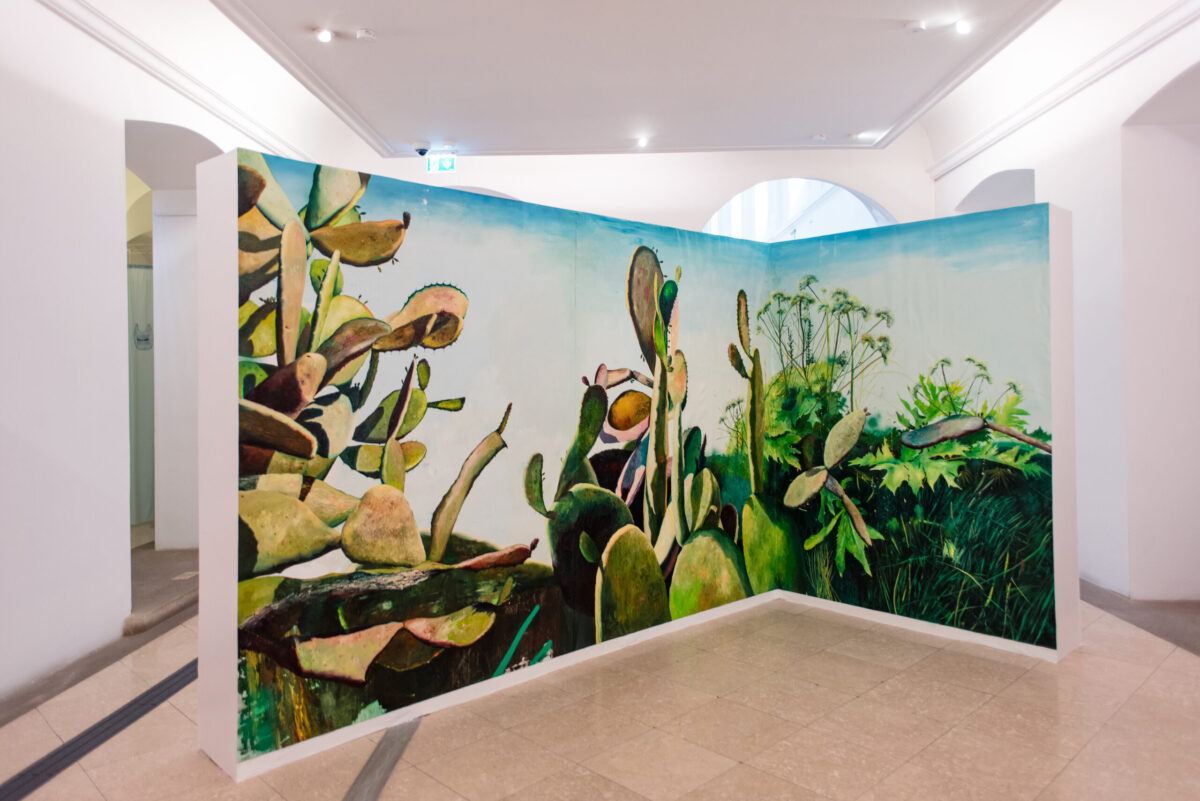
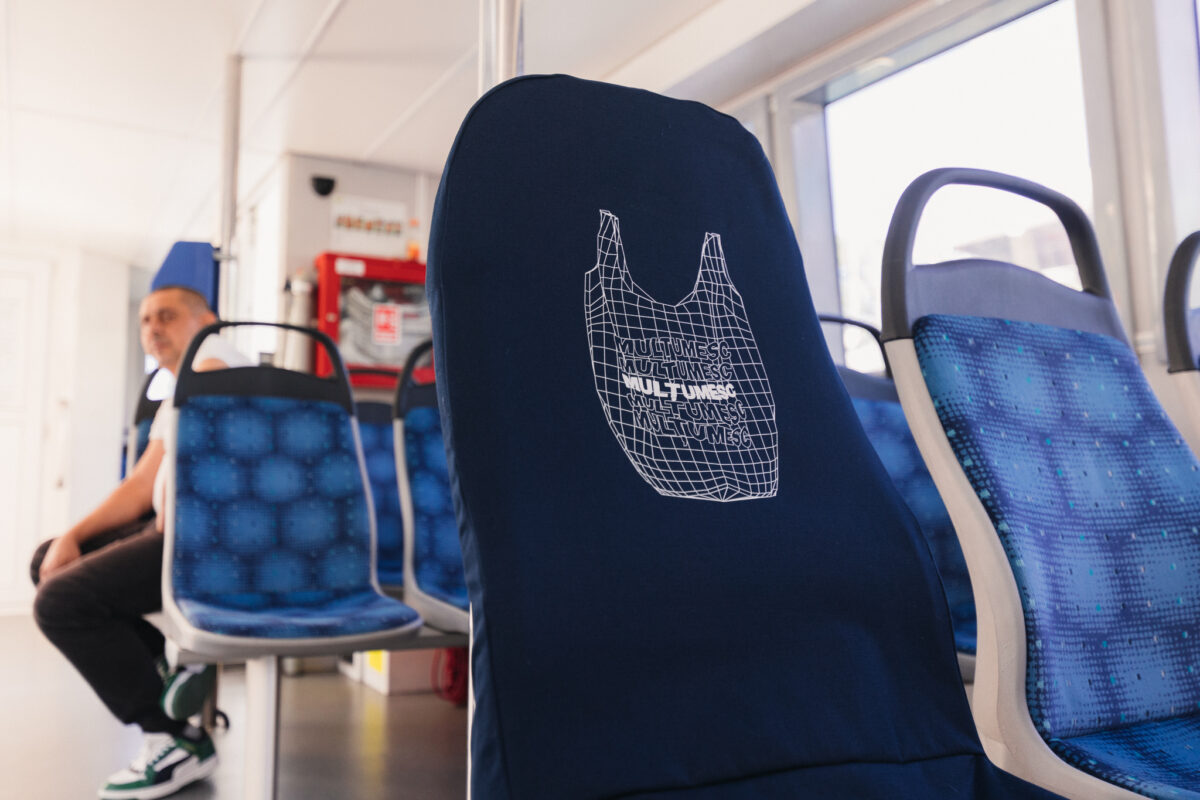
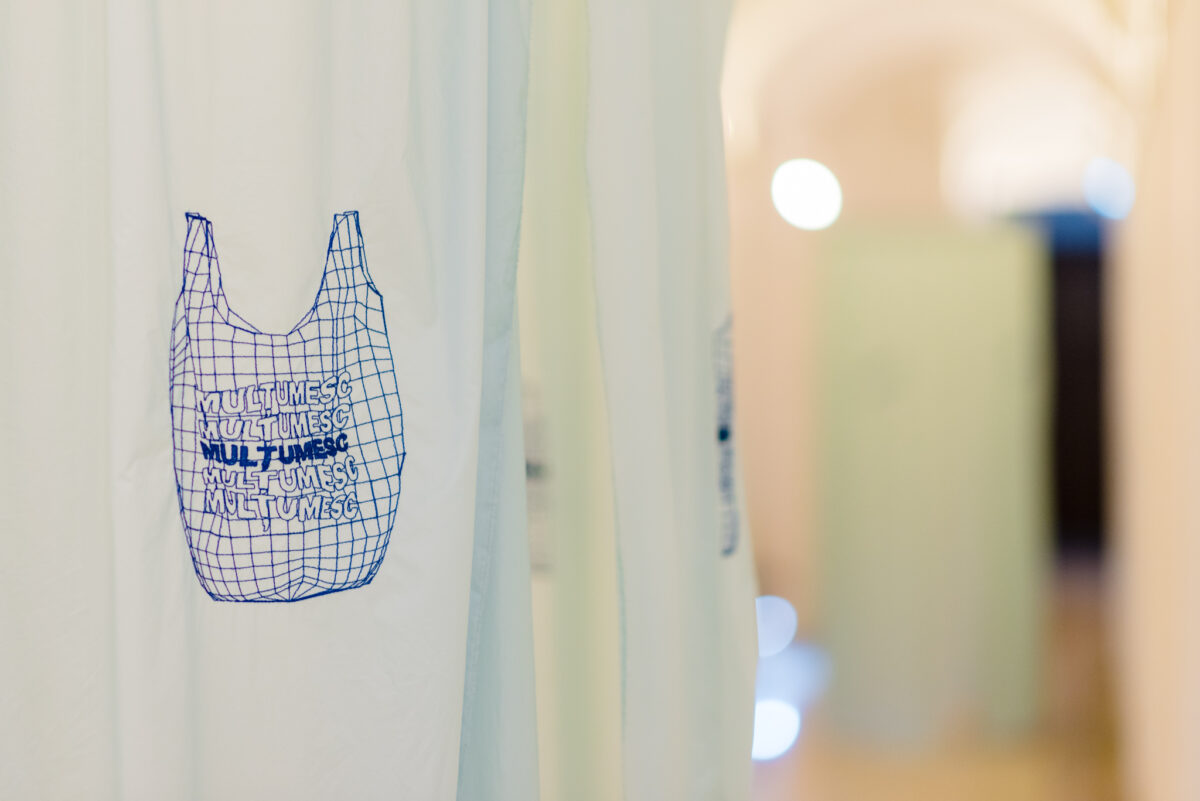
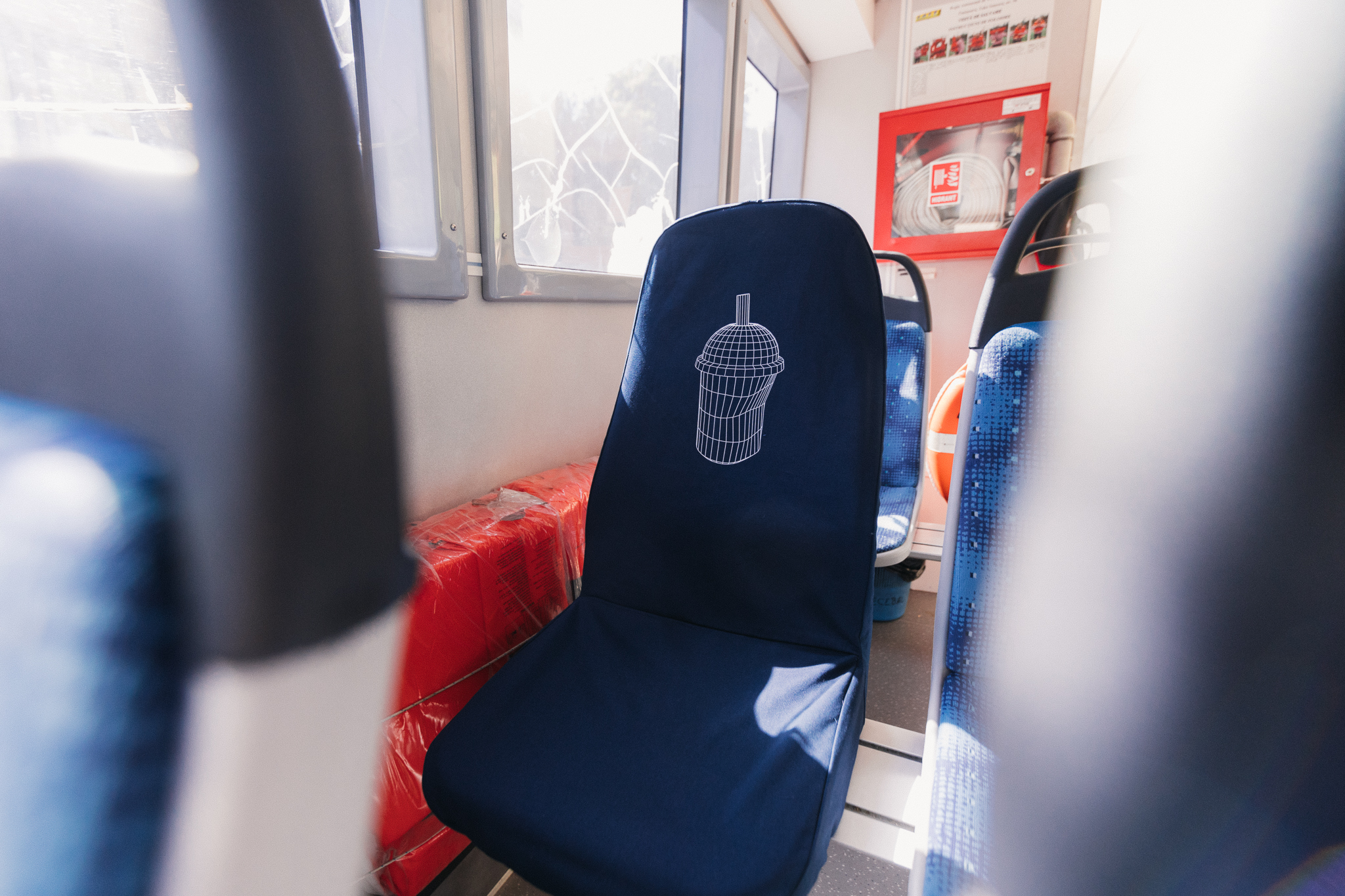
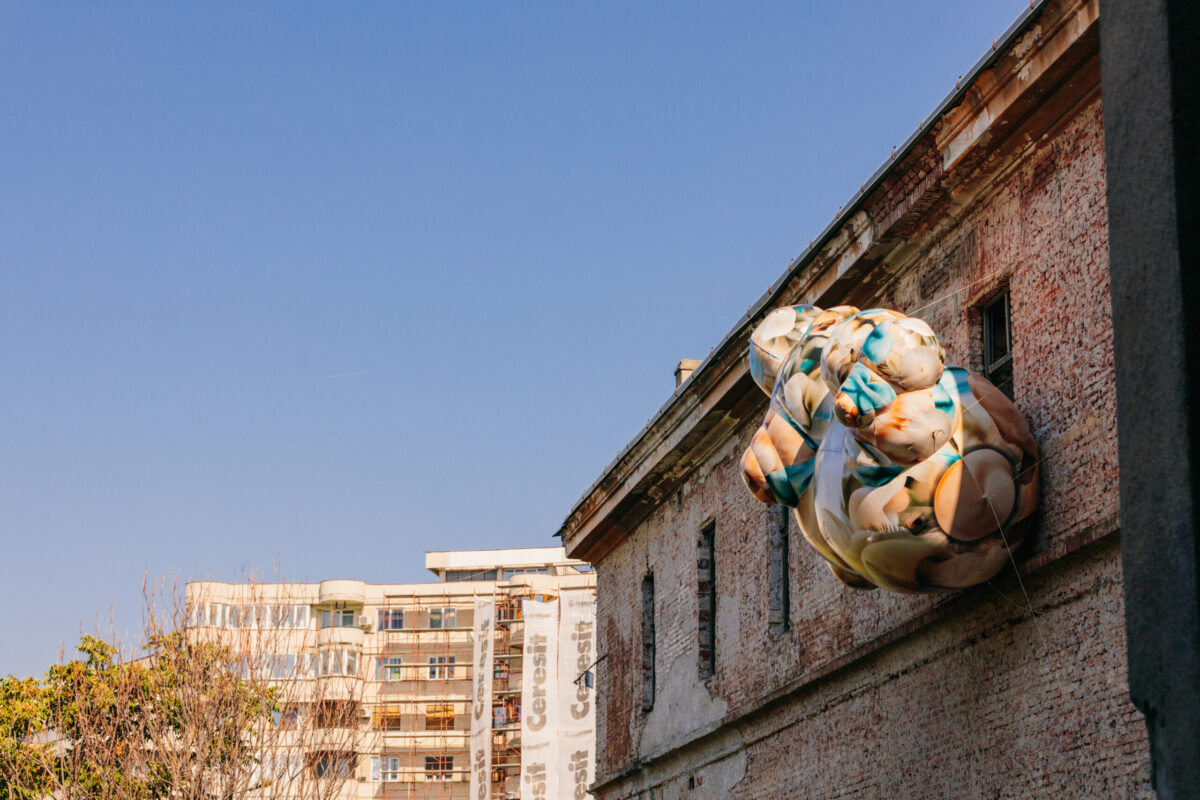
(Monument to Escaping Helium)
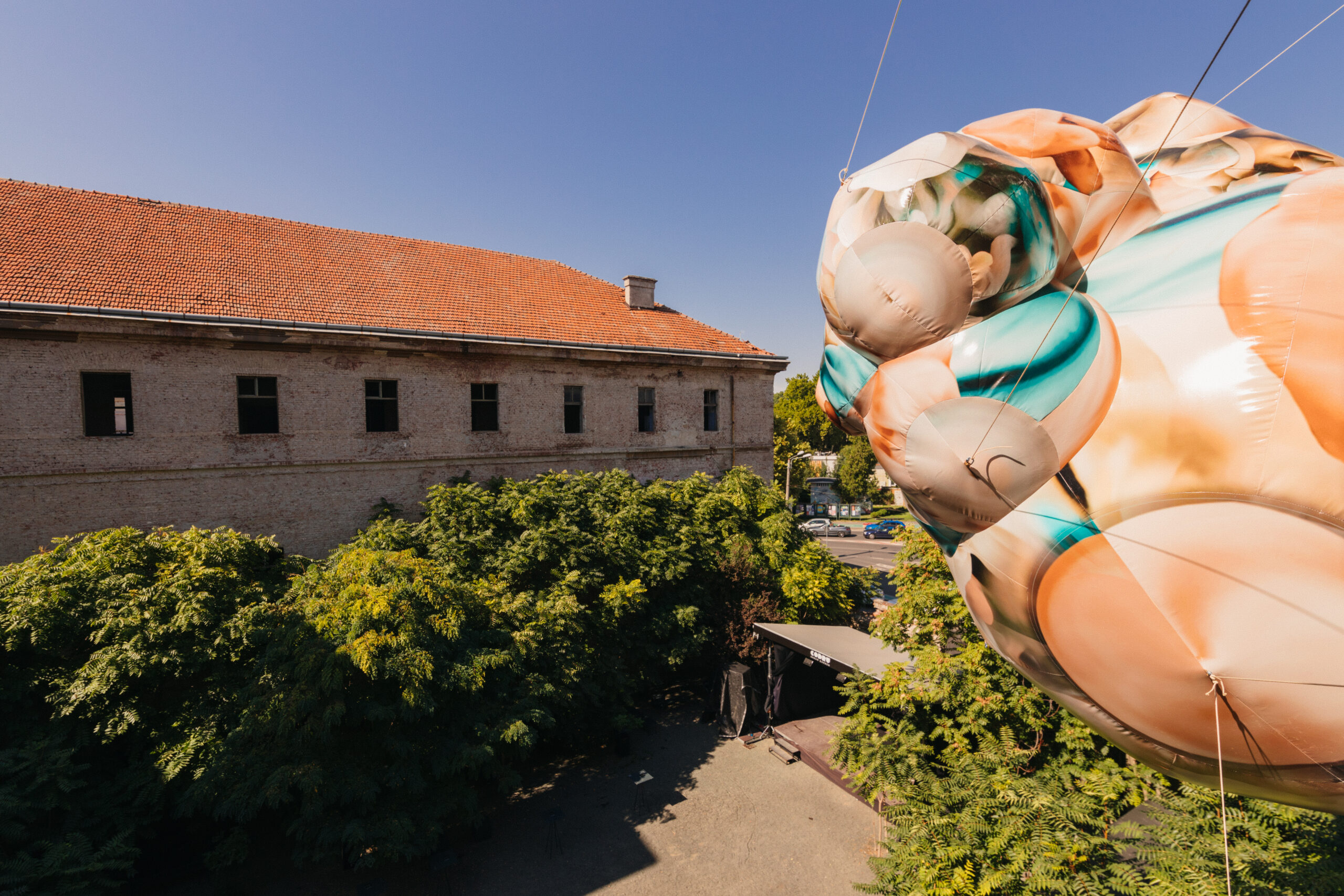
(Monument to Escaping Helium)
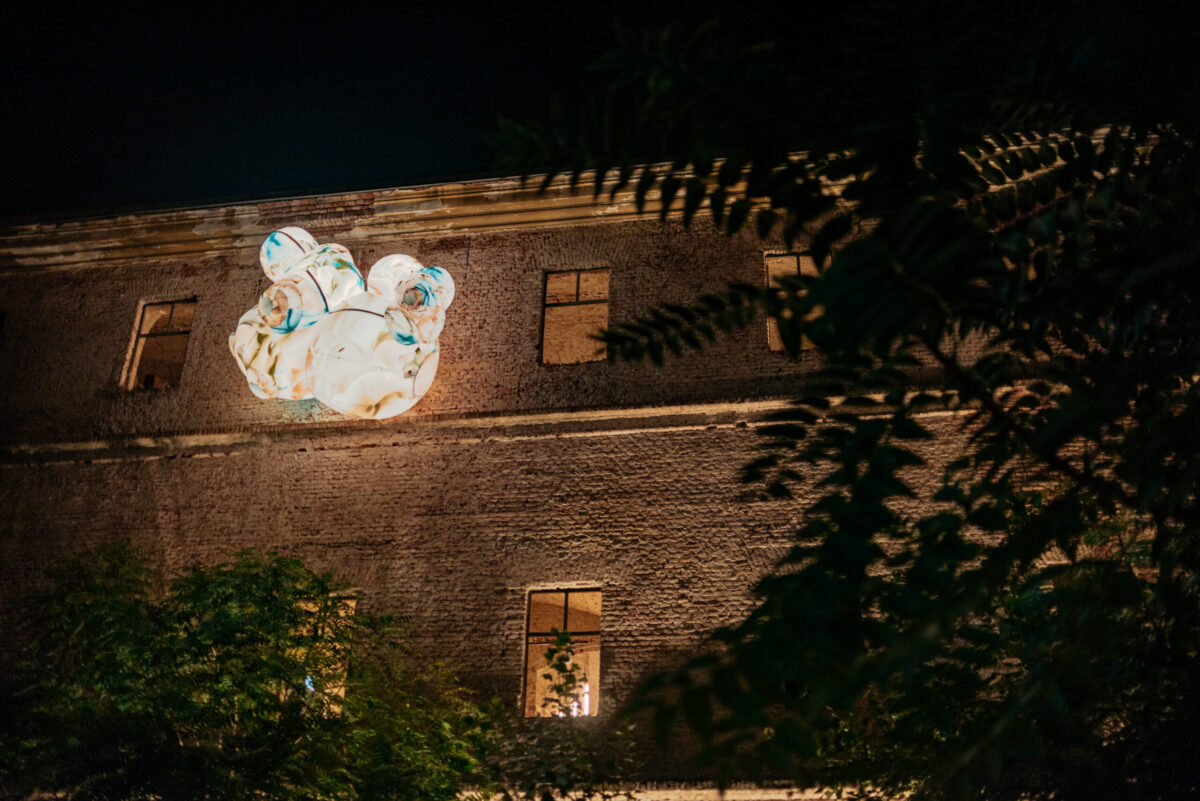
(Monument to Escaping Helium)
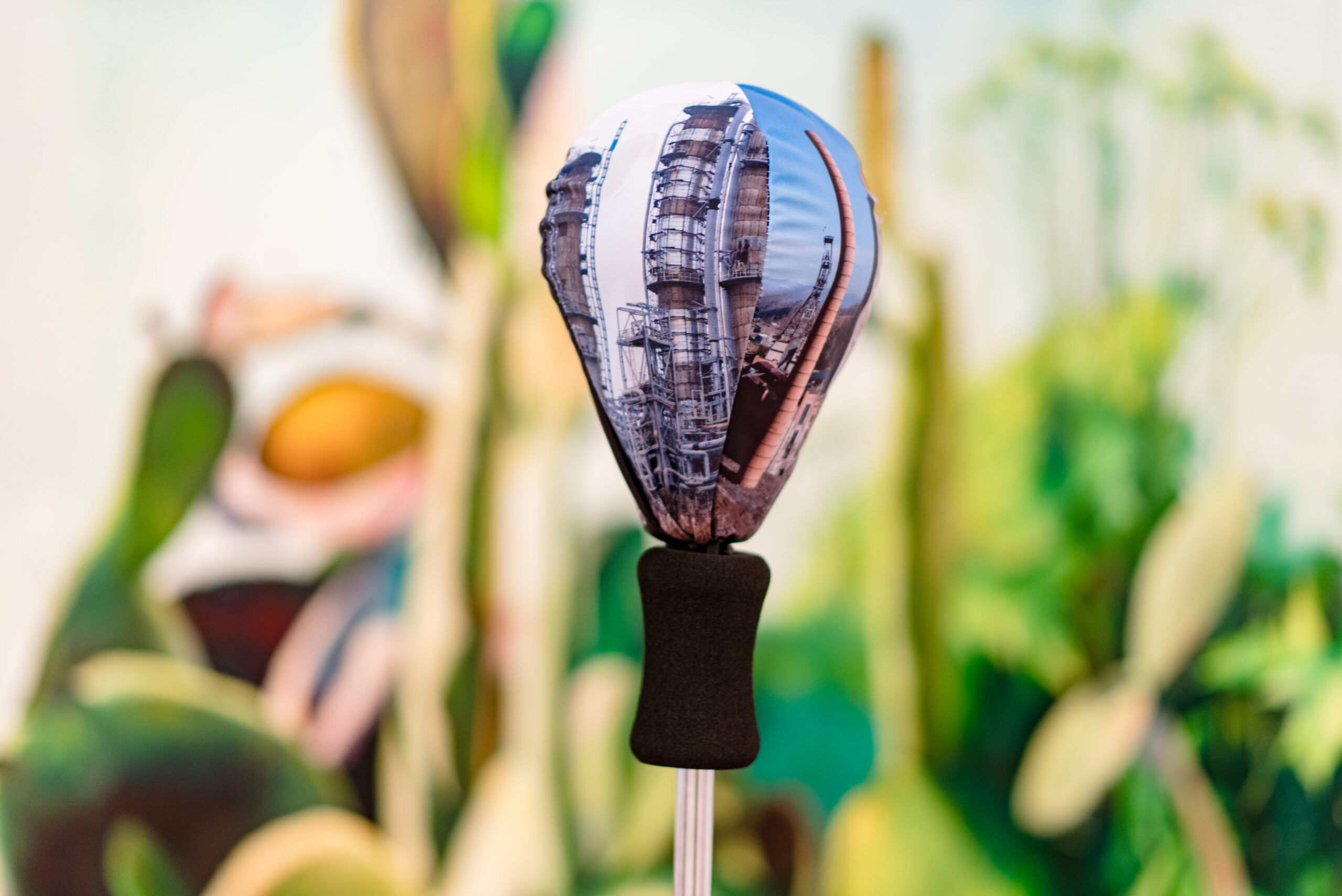
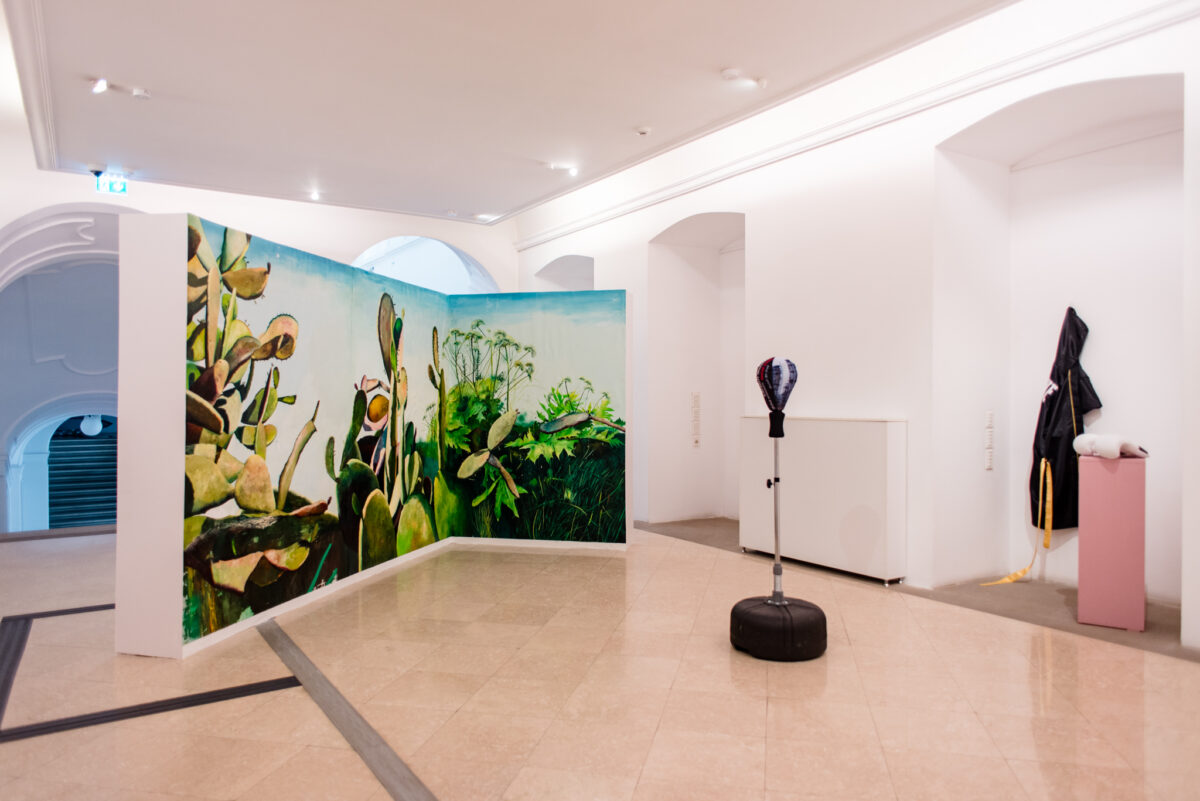
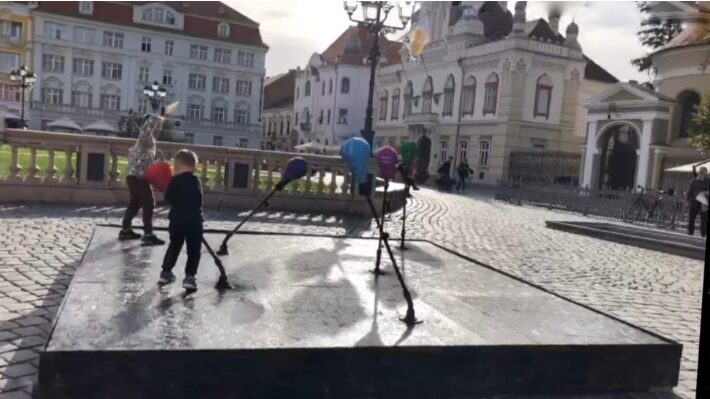
A healing process – On climate change anxiety/ Unirii Square
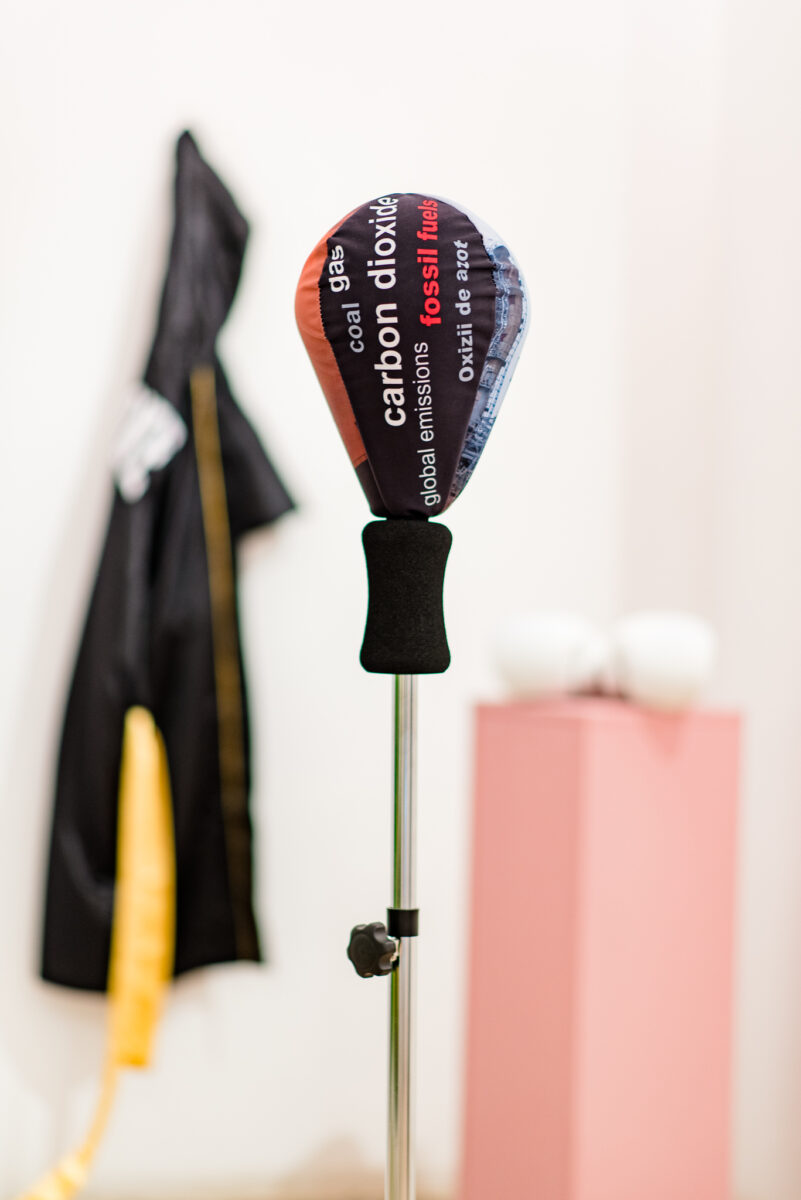
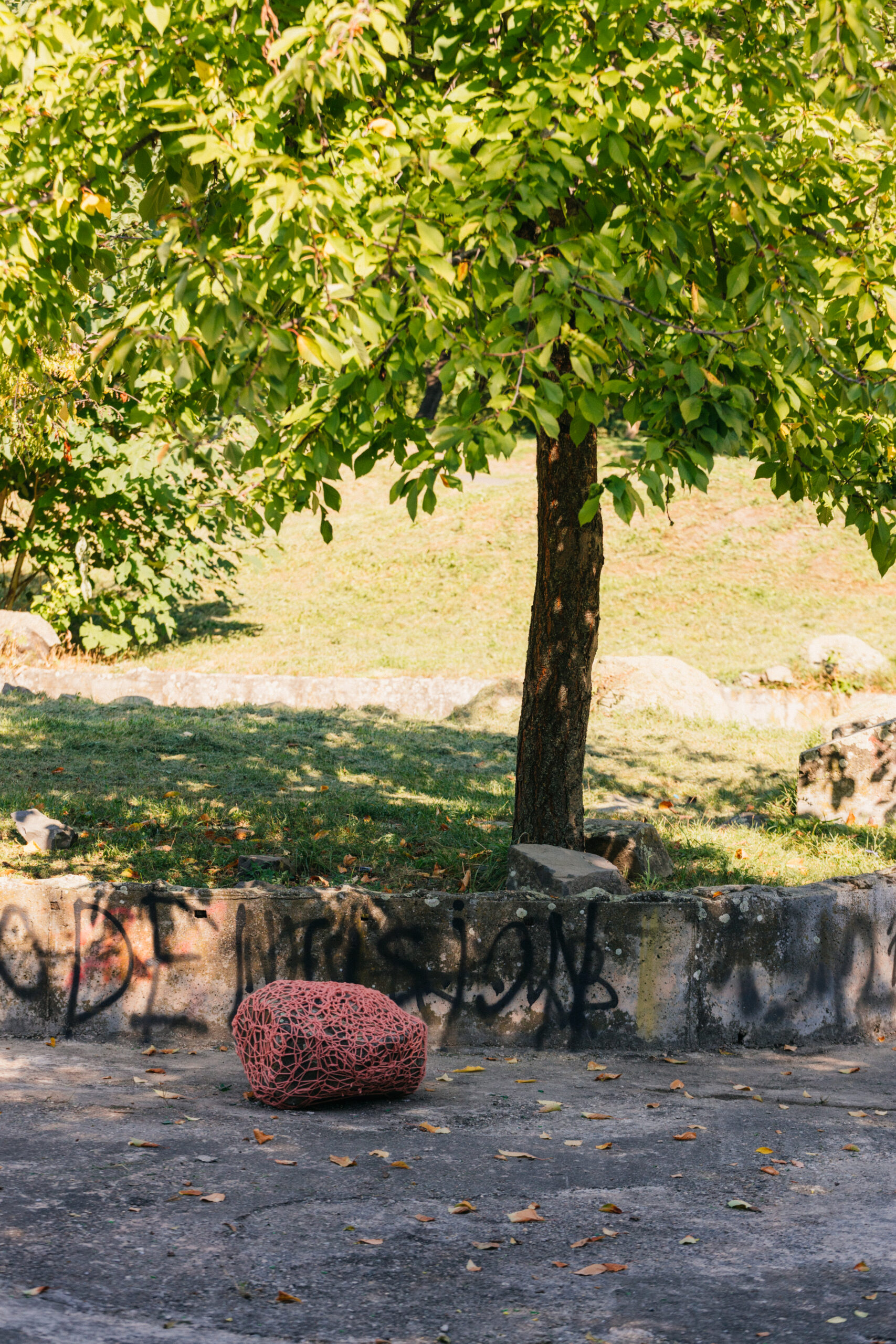
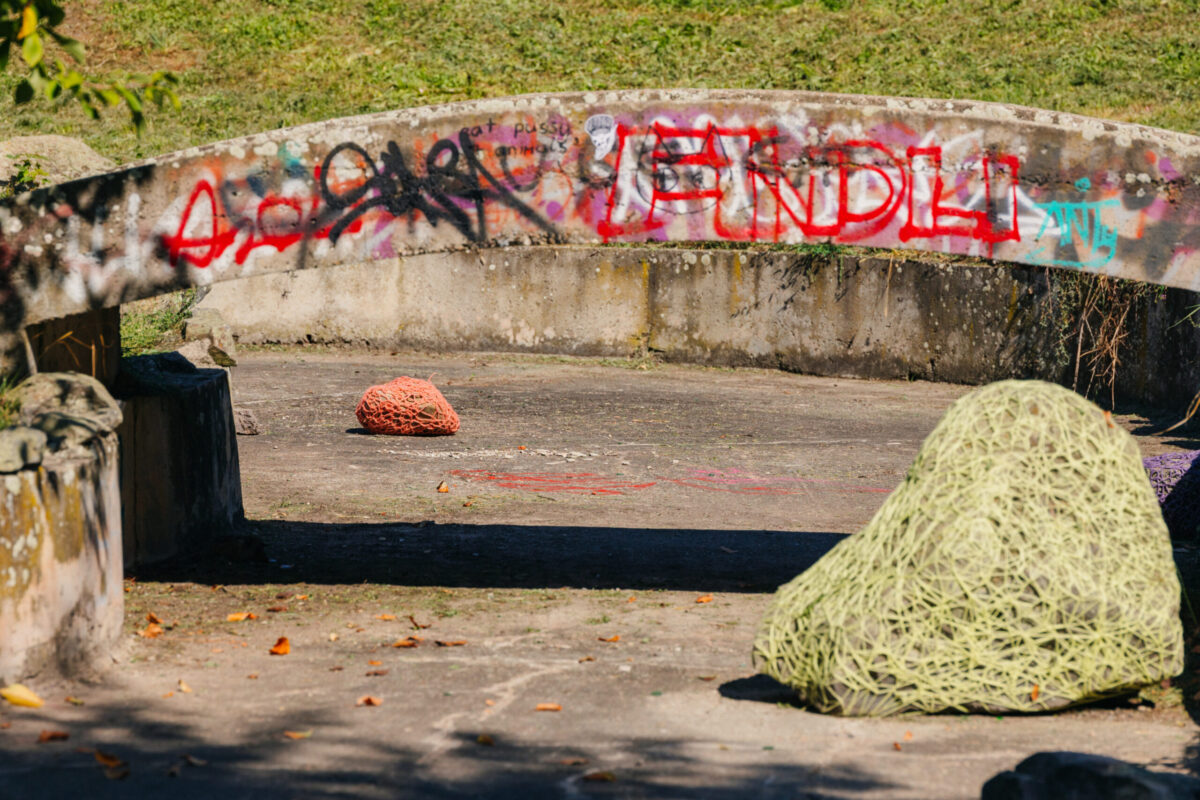
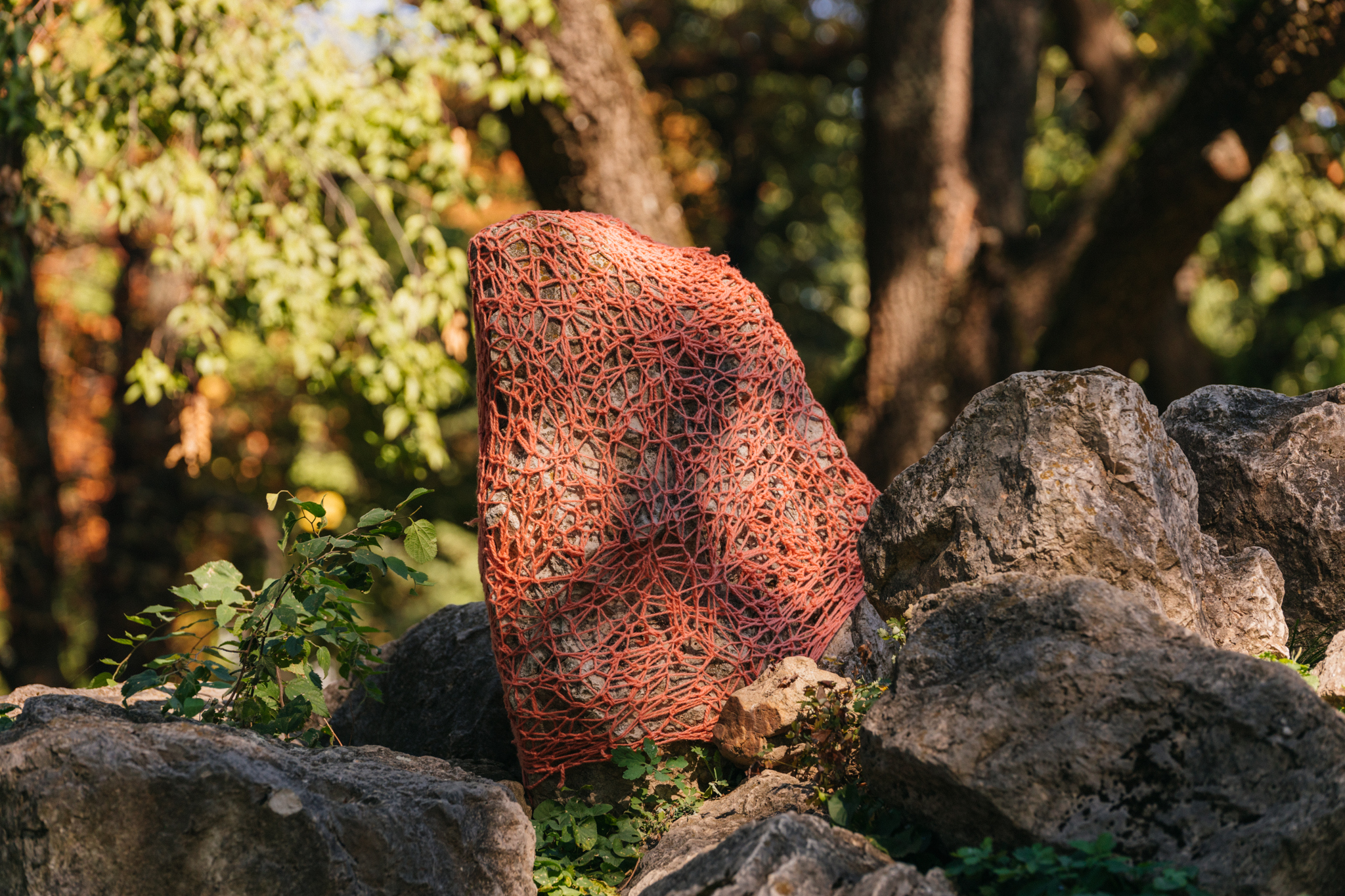
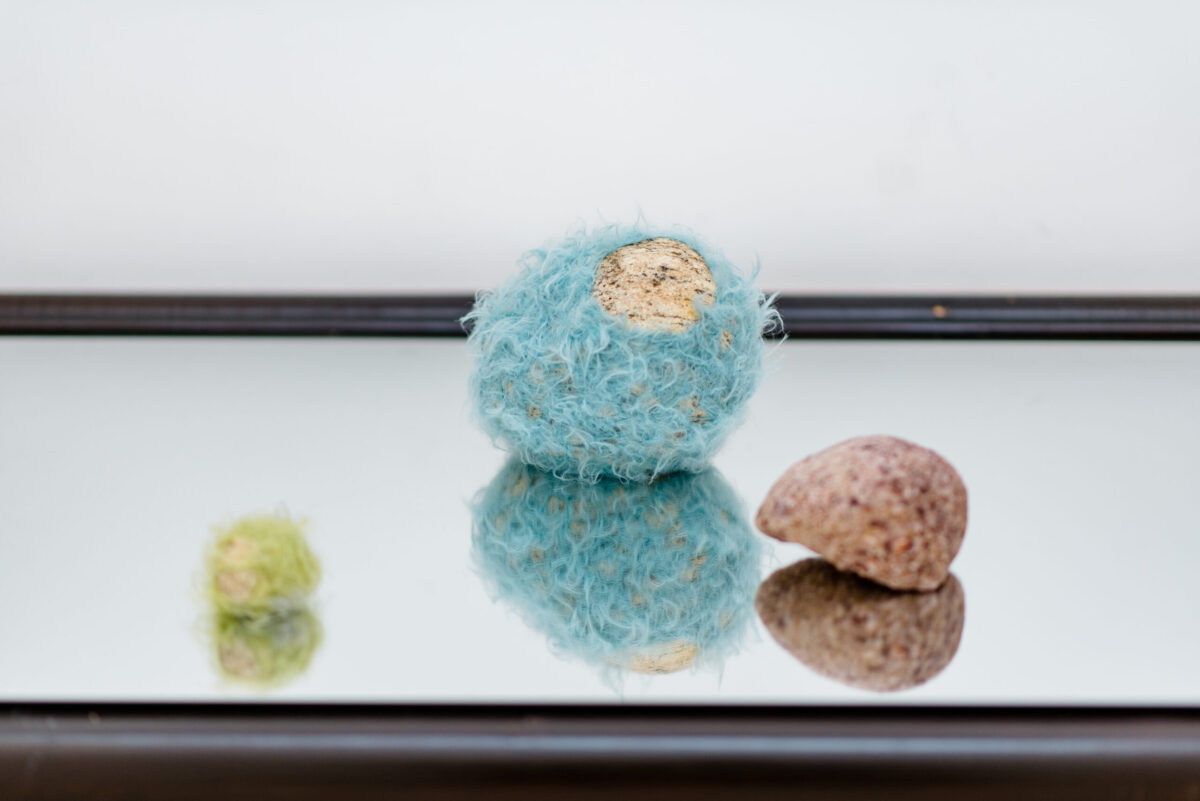
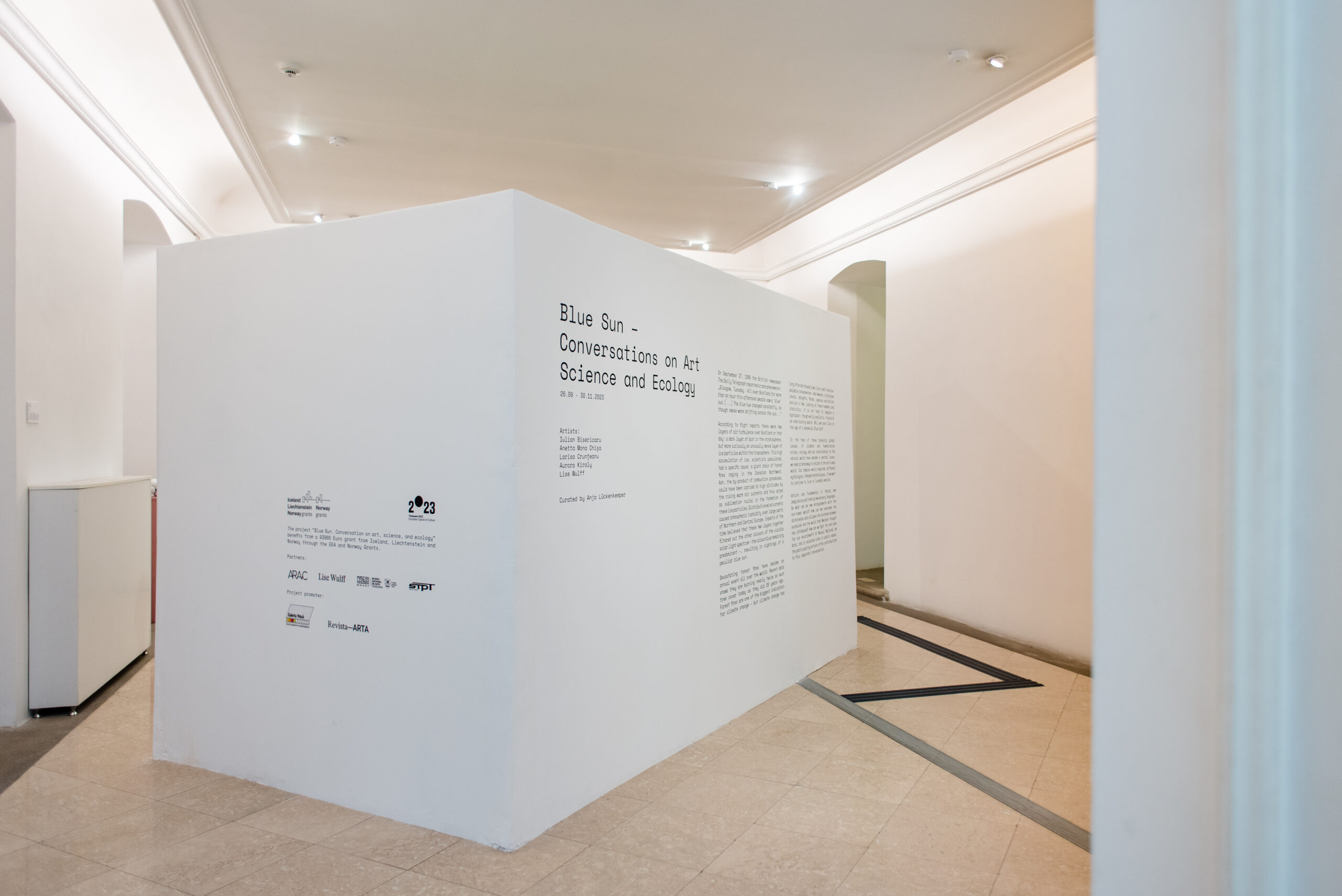
On September 27, 1950 the British newspaper The Daily Telegraph reported a rare phenomenon: „Glasgow, Tuesday – All over Scotland for more than an hour this afternoon people saw a ‘blue’ sun. (…) The blue hue changed constantly, as though smoke were drifting across the sun…”
According to flight reports there were at least two layers of air turbulence over Scotland on that day: a dark layer of dust and sand in the stratosphere, about 13 km high, attributed later to sandstorms and volcanic eruptions, but more curiously a thick layer of ice particles in conspicuously high density within the thin cirrus cloud formation in the troposphere, between 6-9 km high. Now, cirrus clouds are always ice clouds, yet this time scientists speculated the high accumulation of ice had a different cause: a giant chain of forest fires raging in the Canadian Northwest. Ash, the by-product of combustion processes, could have been carried to high altitudes by the rising warm air currents and thus acted as sublimation nuclei in the formation of these ice particles. Distributing wind currents distributed resulting in atmospheric turbidity over the North Atlantic and large parts of Northern and Central Europe. Experts of the time believed that these two layers together filtered out the other colors of the visible solar light spectrum – the color blue remaining predominant –, resulting in sightings of a peculiar Blue Sun.
(text by Anja Lückenkemper)
more details on this project: https://www.soarelealbastru.ro/about-blue-sun-project/
Highlights from the Residency Tromso
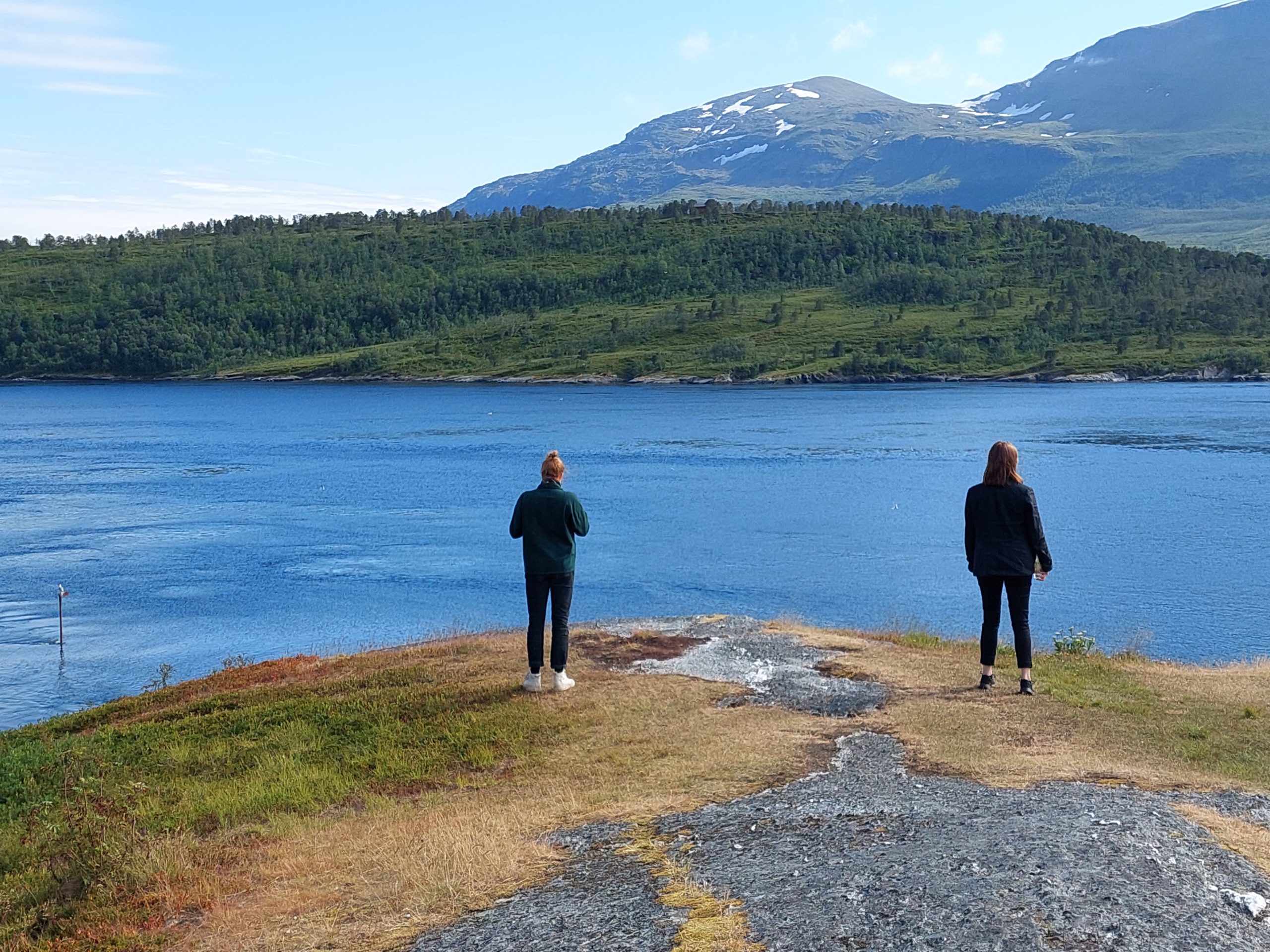
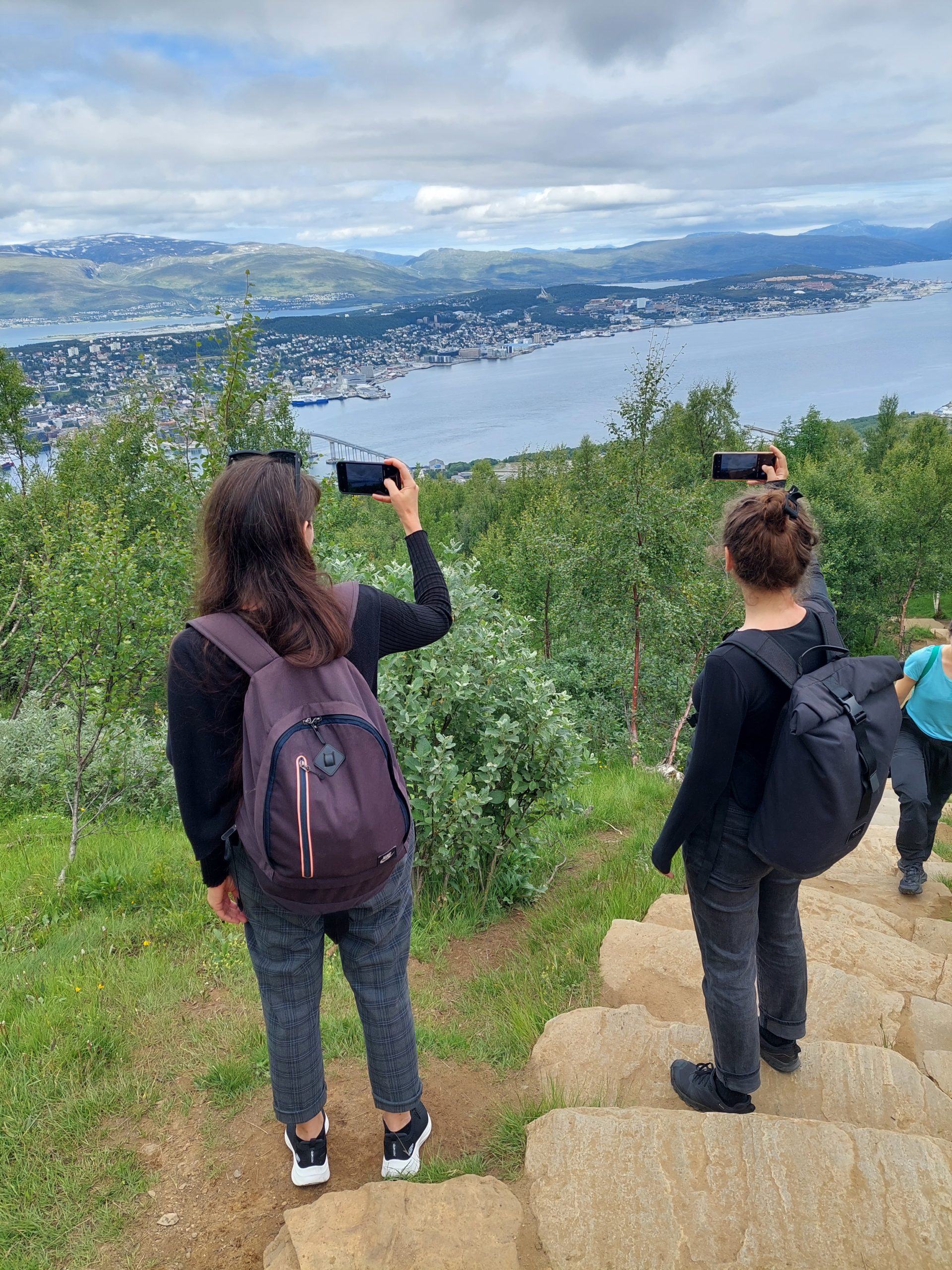
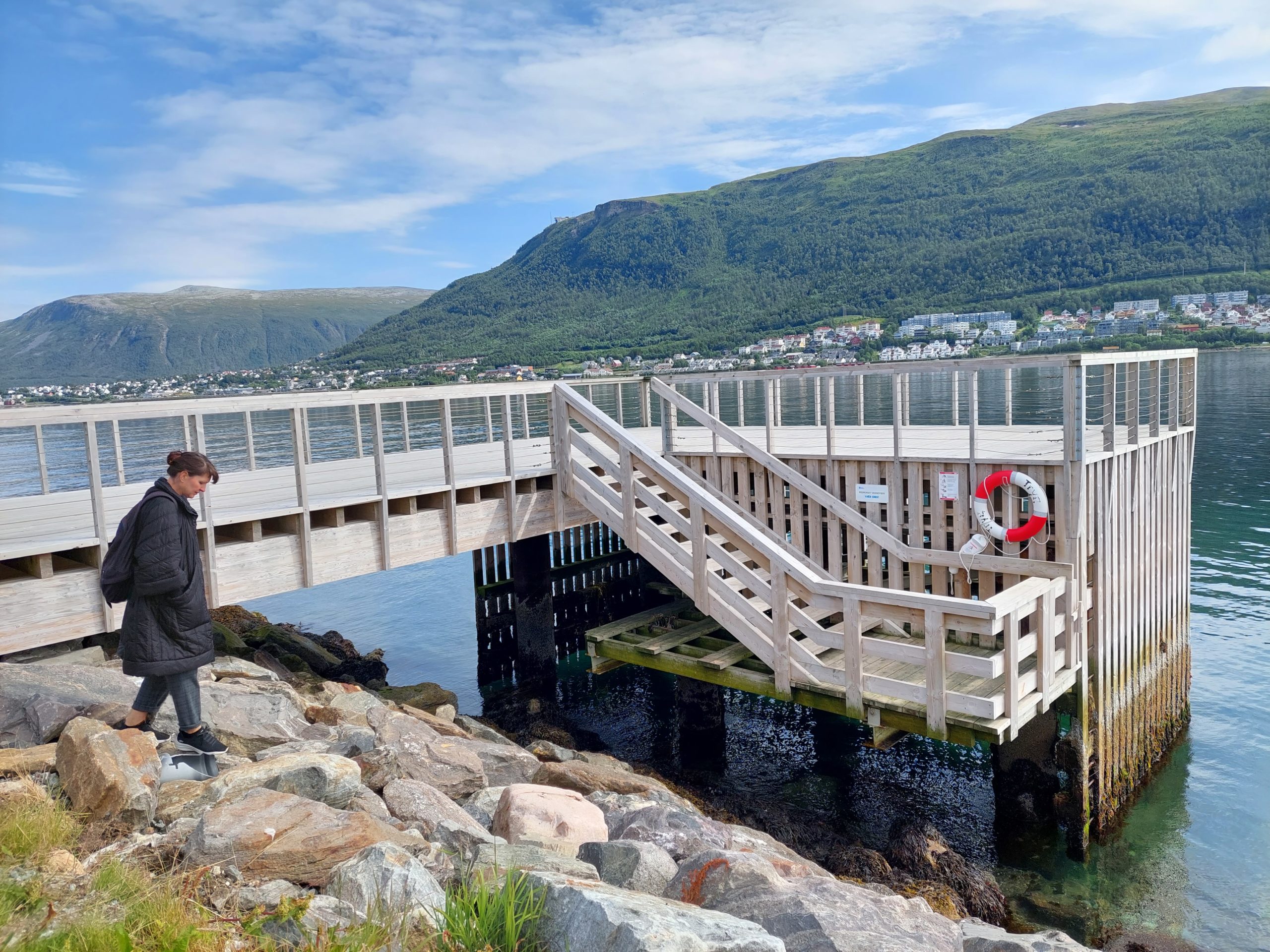
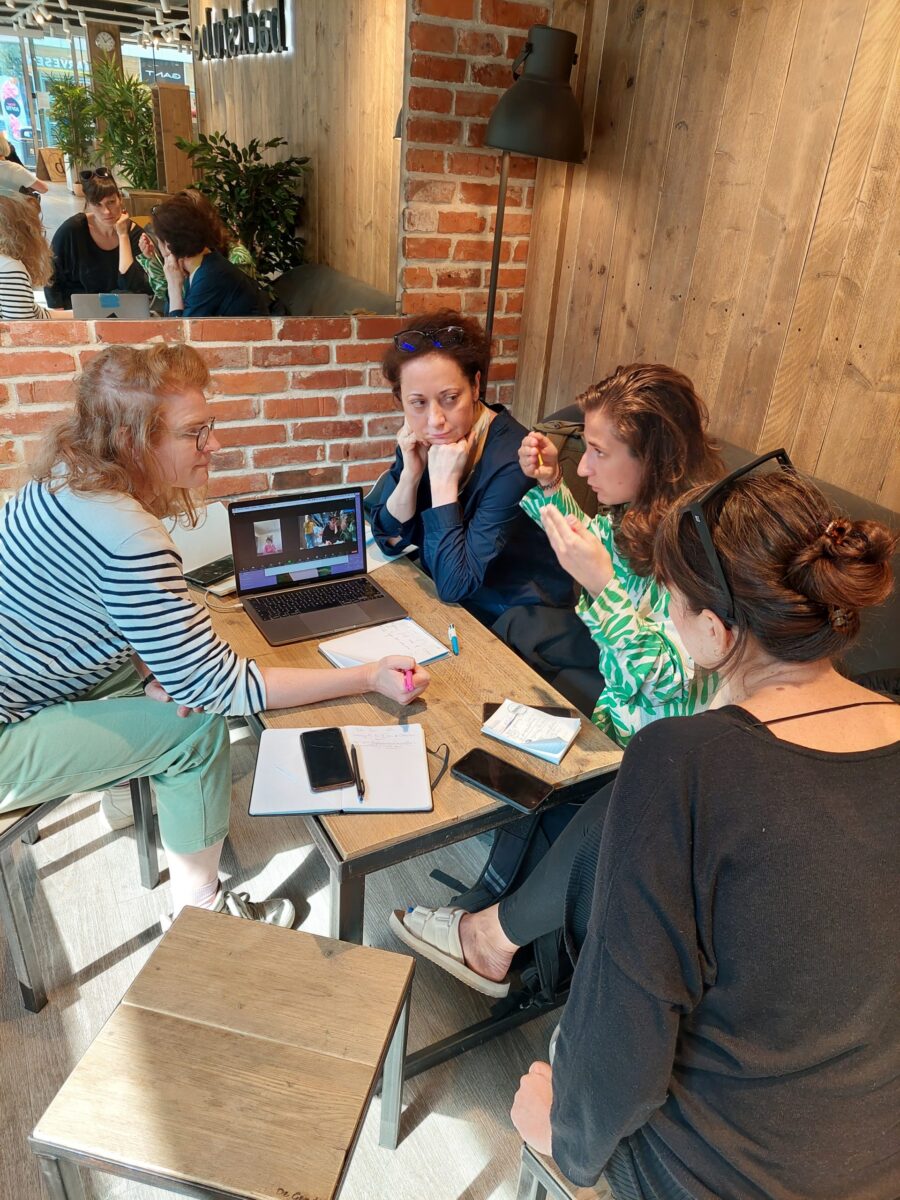
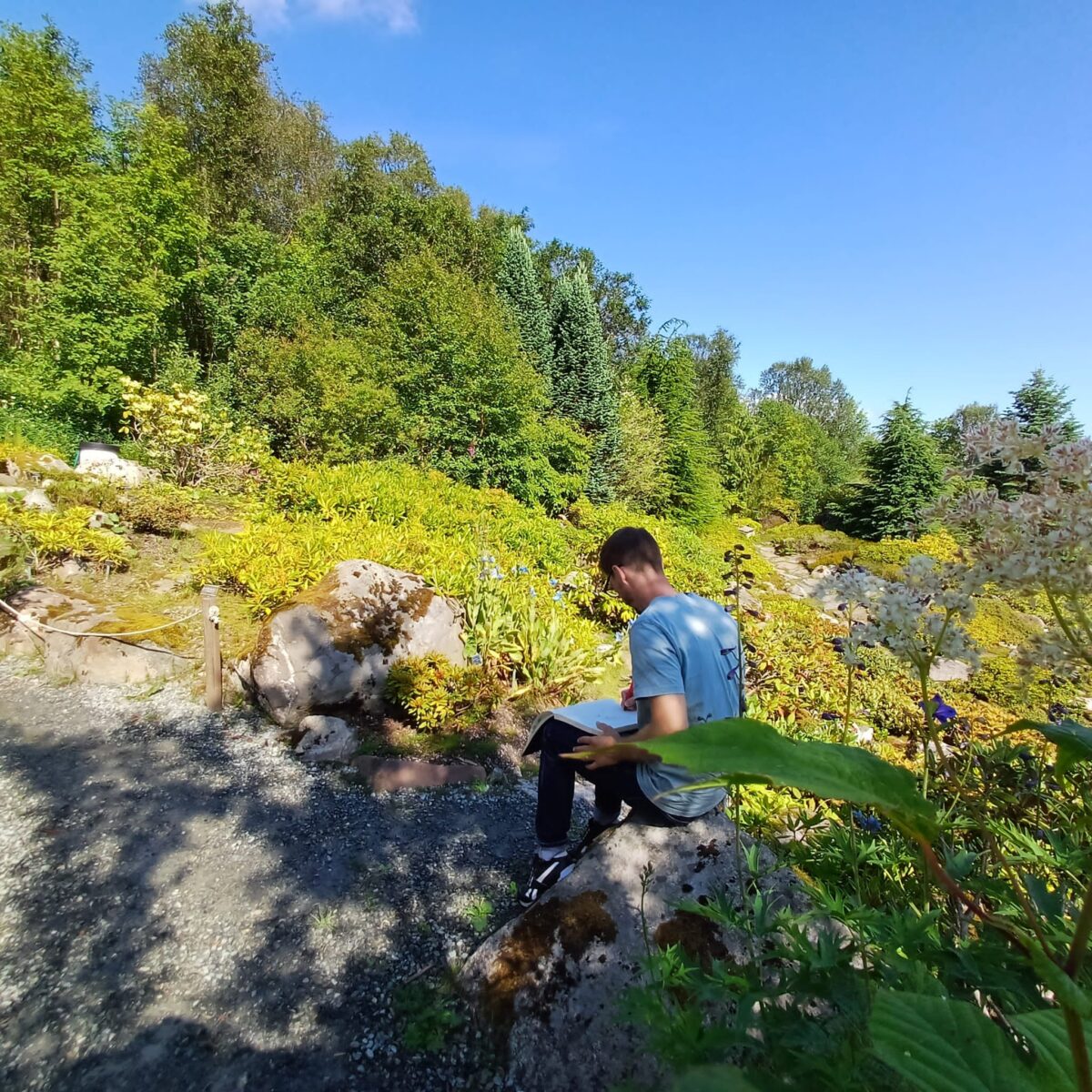
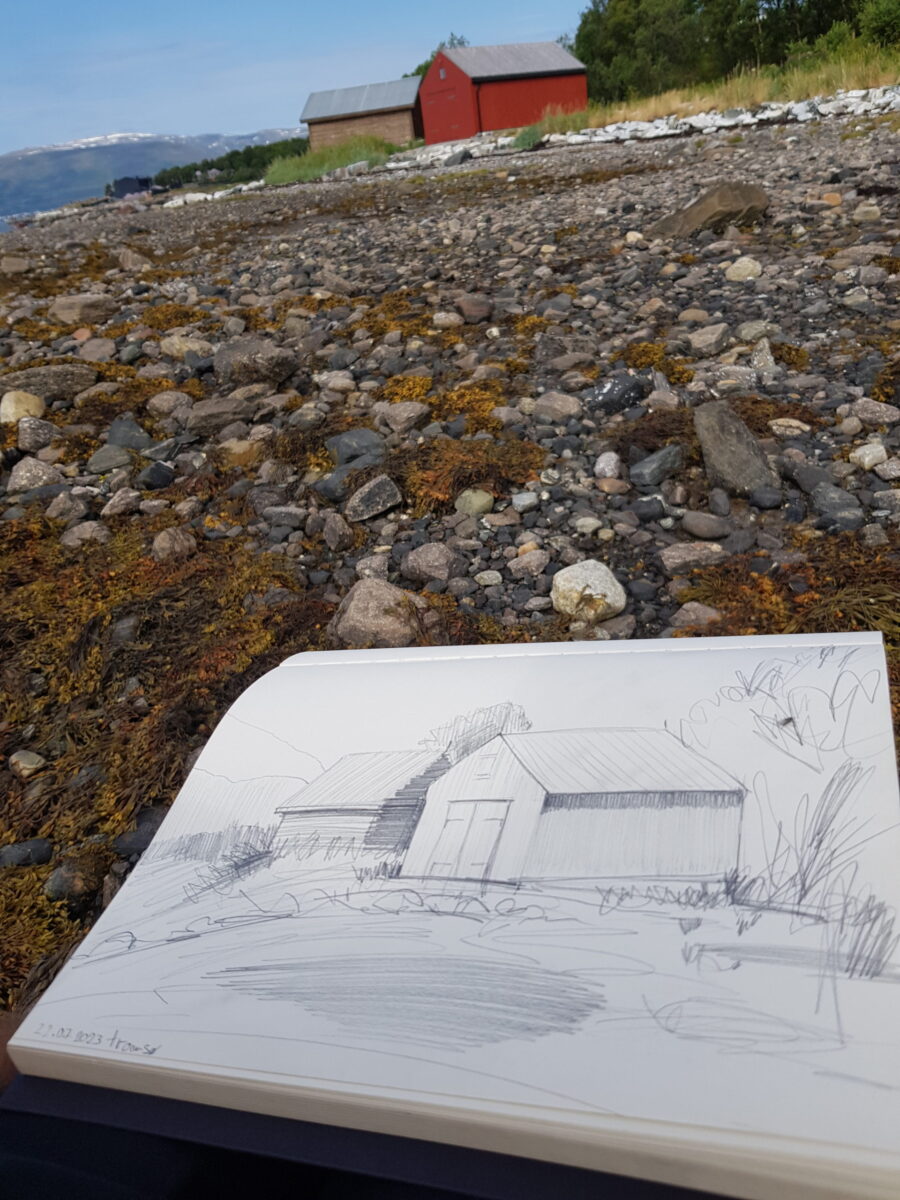
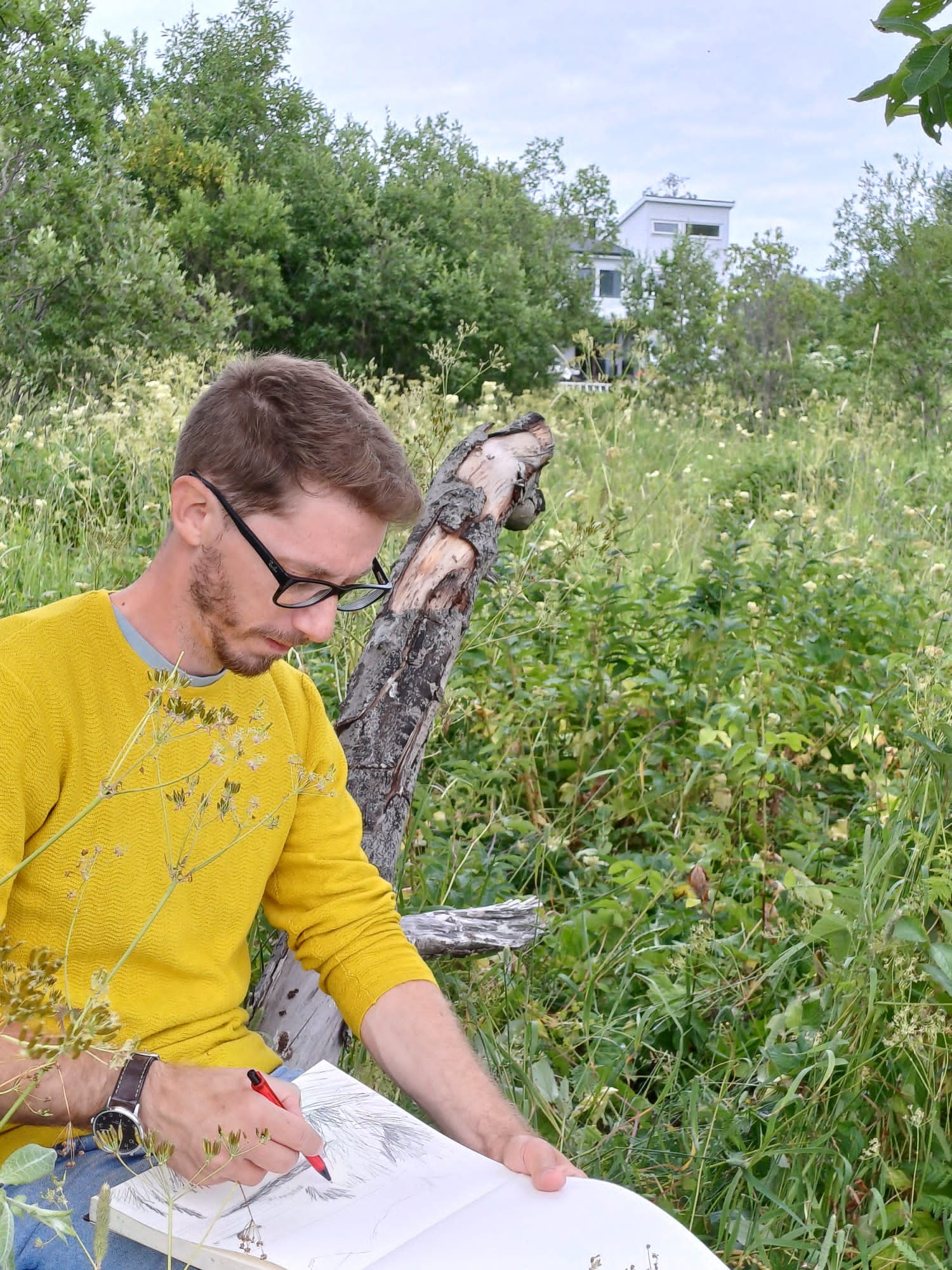
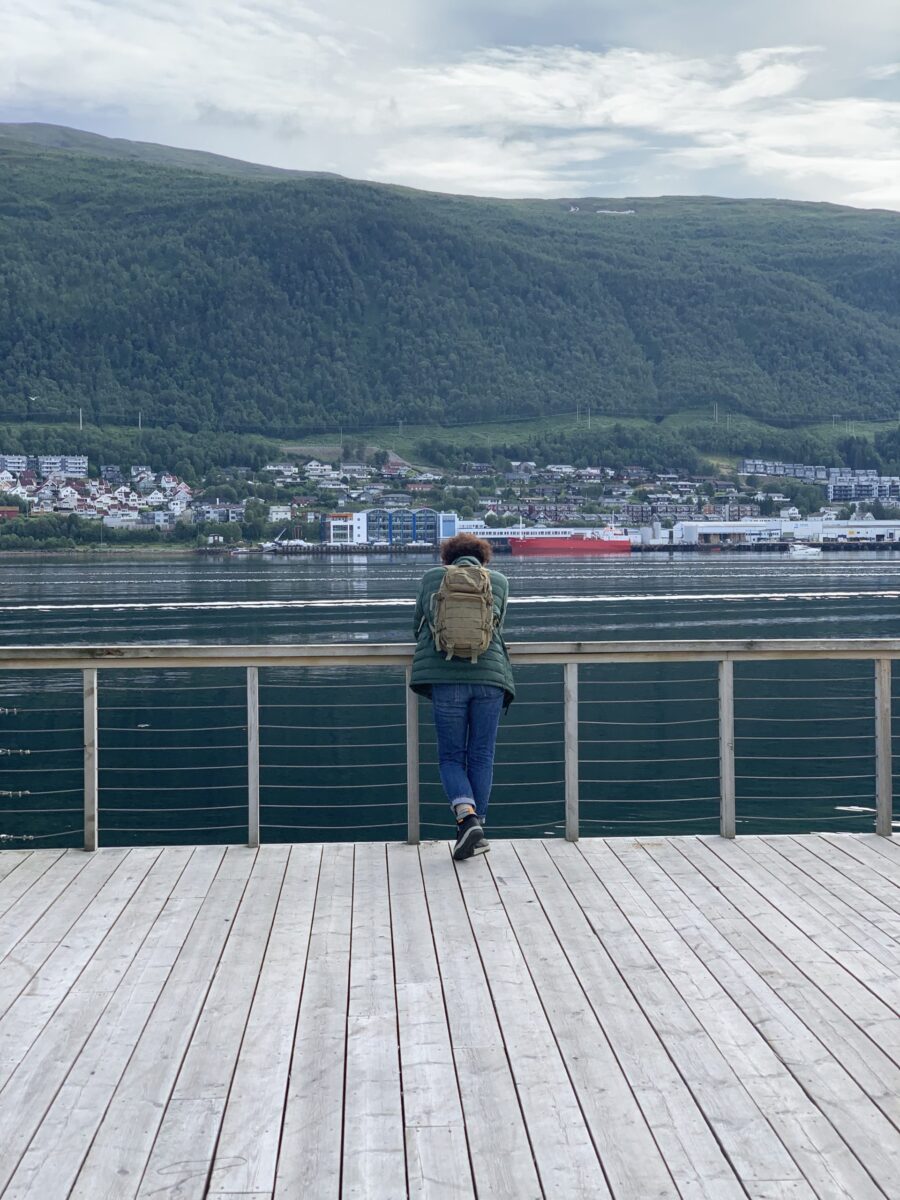
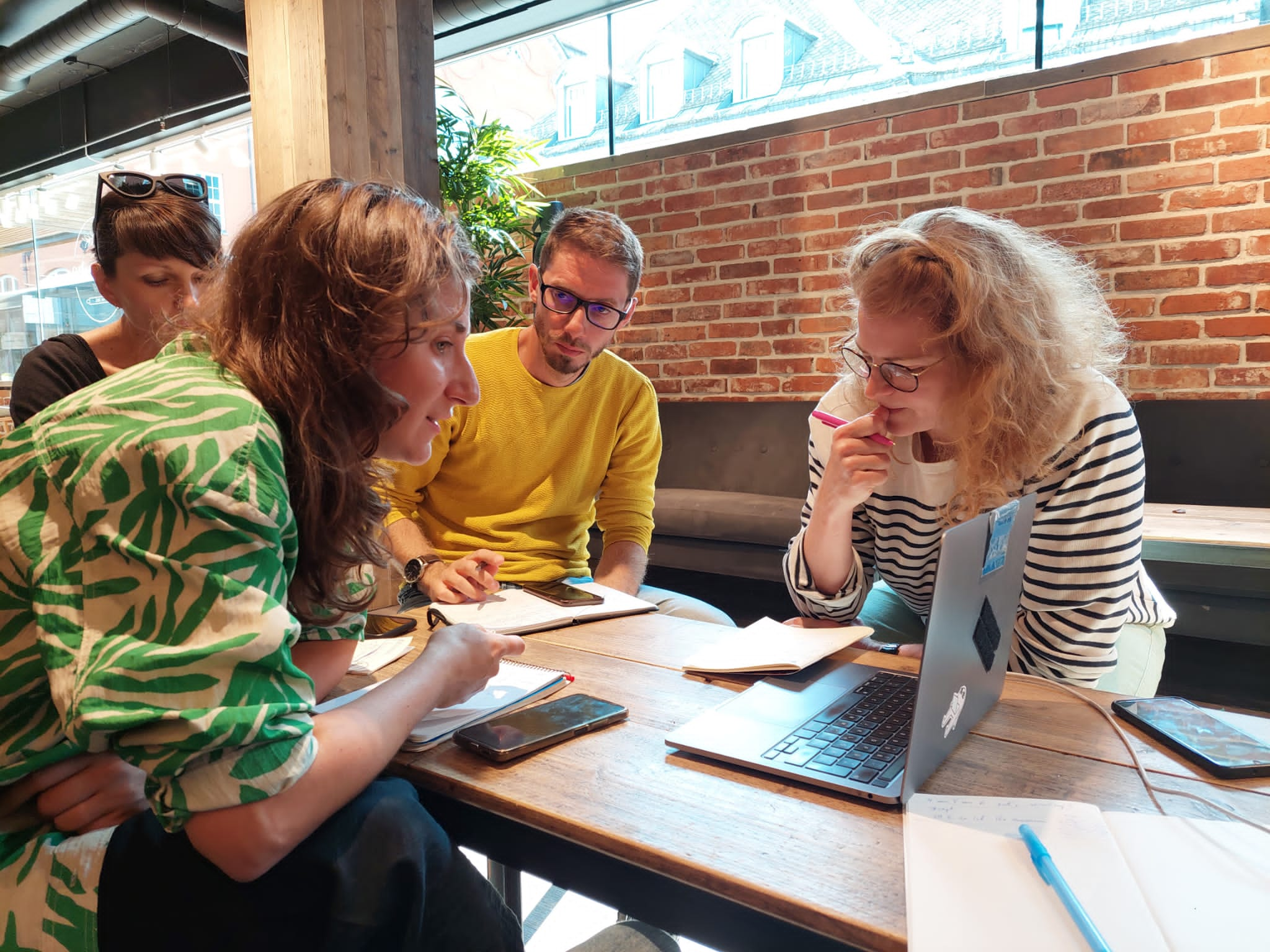
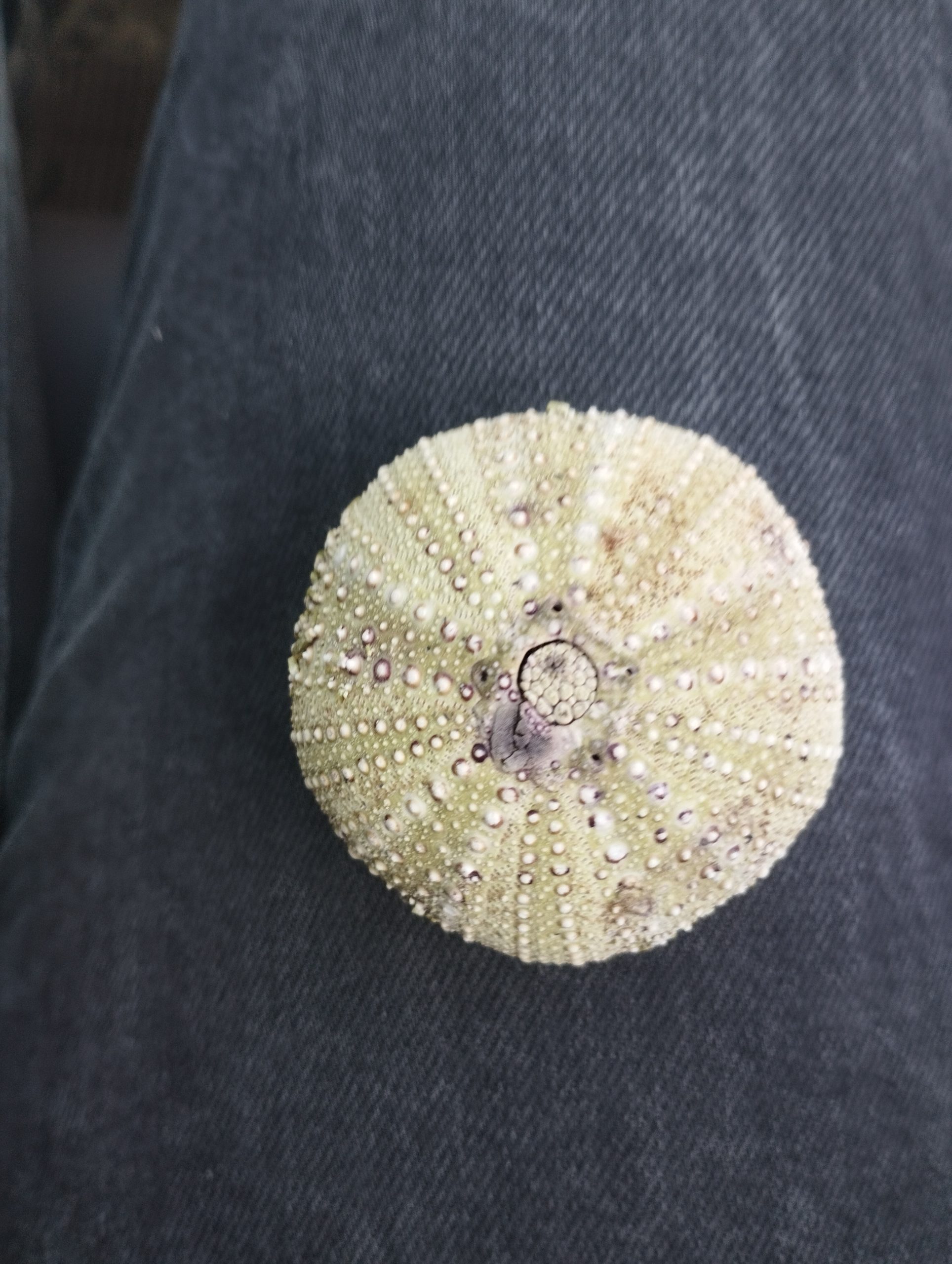
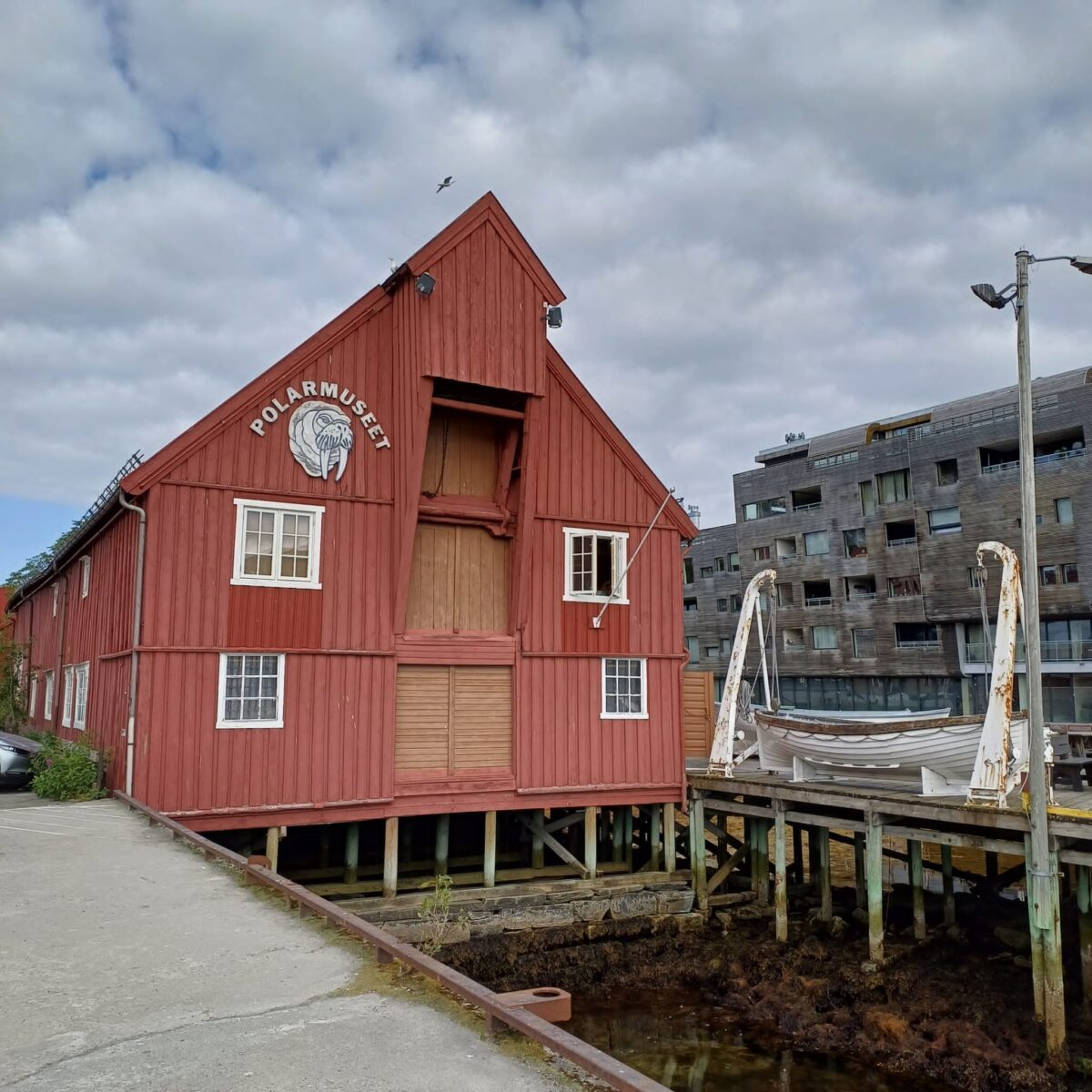
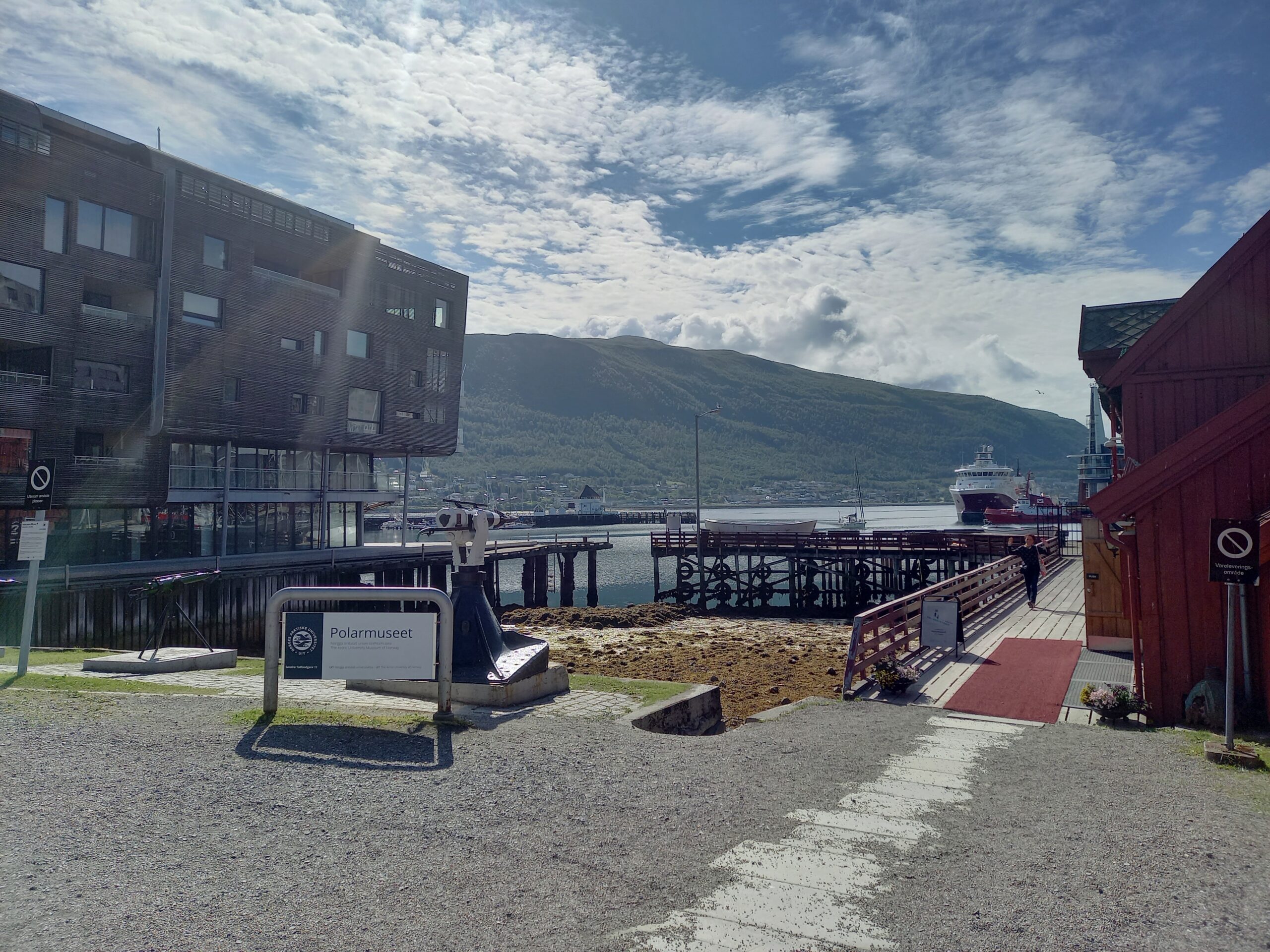
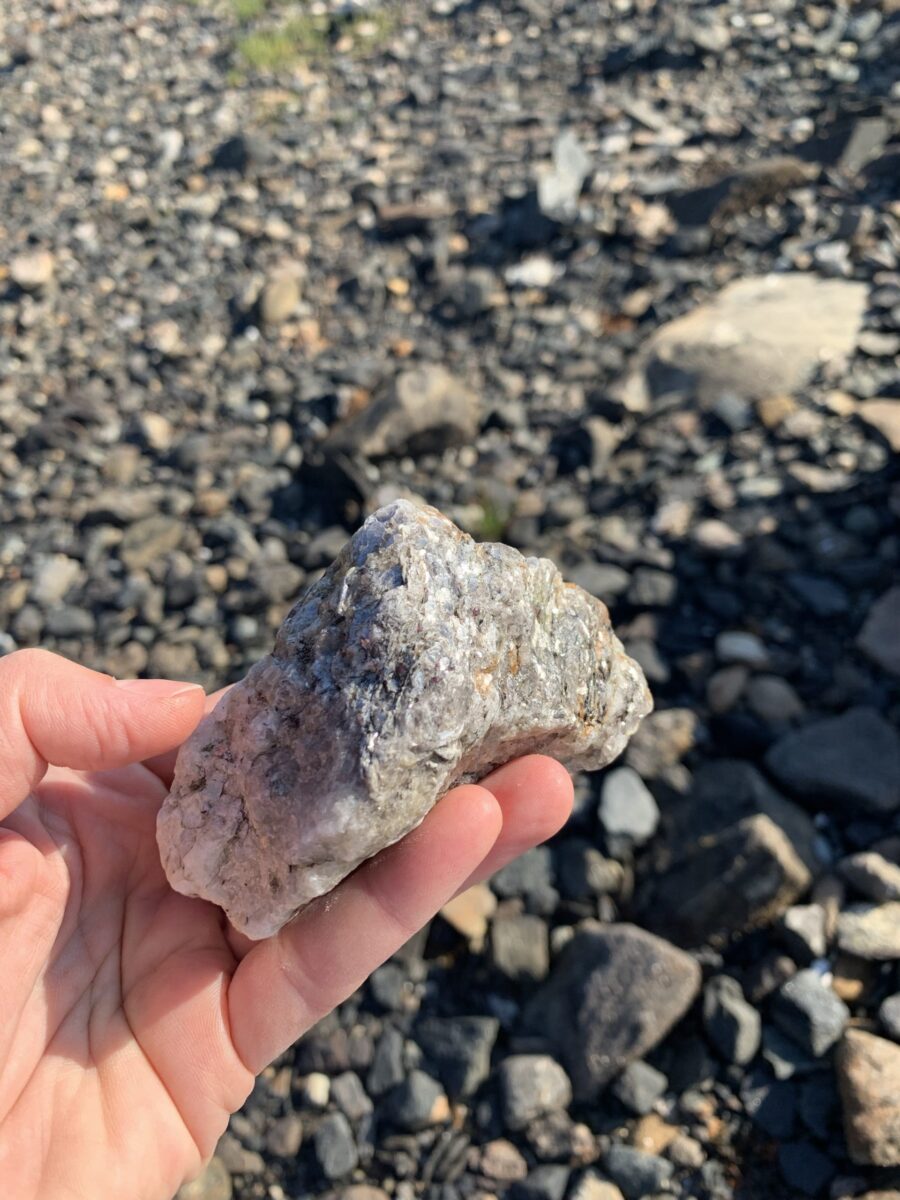
Project part of Timisoara 2023, European Capital of Culture

The EEA and Norway Grants represent the contribution of Iceland, Liechtenstein and Norway towards a green, competitive and inclusive Europe. There are two overall objectives: reduction of economic and social disparities in Europe, and to
strengthen bilateral relations between the donor countries and 15 EU countries in Central and Southern Europe and the Baltics. The three donor countries cooperate closely with the EU through the Agreement on the European Economic Area (EEA). The donors have provided €3.3 billion through consecutive grant schemes between 1994 and 2014. For the period 2014-2021, the EEA and Norway Grants amount to €2.8 billion.
